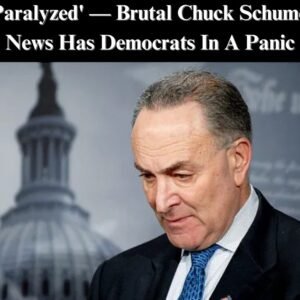For years, the Democratic Party managed to balance progressive ideals with a more moderate, pragmatic approach to governance. However, this delicate equilibrium has crumbled in recent years, according to political analyst Chuck Todd. He argues that the party is now locked in a fierce struggle between two opposing factions, each pulling leadership in different directions.
On one side are progressive hardliners who advocate for sweeping reforms and are unafraid to use bold rhetoric to push their agenda. On the other are moderates and traditional Democrats, who believe in bipartisanship, gradual change, and a more measured approach to policymaking. This growing divide has made it increasingly difficult for the party to present a unified message.
Todd compares this internal discord to past political disputes, such as the intense debates between Bill Clinton and Jesse Jackson in the late 1980s. Back then, he notes, open disagreements strengthened the party by refining policy positions and fostering unity. Today, however, he believes the party is plagued by silence and indecision, leaving it without a clear direction.
At the heart of the issue is a leadership struggling to satisfy both sides. Progressives push for bold measures that some view as too extreme, while moderates call for a focus on practical governance. Todd asserts that this dynamic has left Democratic leaders “paralyzed,” unable to fully embrace one side without alienating the other.
This internal battle is more than just an ideological conflict; it has significant electoral consequences. When leaders fail to project a coherent vision, voters become disengaged or confused about what the party stands for. As a result, Democrats risk losing key swing districts where small shifts in public opinion can determine election outcomes.
Republican strategist Brad Todd believes that for Democrats to regain control of Congress, they must broaden their appeal. Winning over former Trump supporters is essential, he argues, yet nearly impossible if the party remains divided. Voters who feel alienated by progressive policies may be more open to moderate candidates—if the party can unify its messaging.
With Democratic leadership appearing indecisive, centrist voters who might be open to compromise see little reason to support the party. Todd contends that this inability to present a strong, clear platform allows Republicans to craft a compelling narrative about Democratic inefficacy, further eroding voter confidence.
Todd’s critique extends beyond party leadership and into electoral strategy. He warns that ongoing infighting has prevented Democrats from addressing the economic concerns of everyday Americans. “When leaders fight among themselves rather than focusing on real issues,” he explains, “it hands their opponents an easy victory.”
The Biden administration’s handling of inflation and the rising cost of living has exacerbated voter discontent. Inflation peaked at 9% in mid-2022, a stark contrast to 1.4% when Biden took office. Todd argues that Democrats failed to prioritize this issue, allowing Republicans to seize the narrative of economic mismanagement.
Historically, political parties that communicate a clear economic message tend to perform better in elections. Todd asserts that Democrats missed an opportunity by not focusing more on addressing high costs and financial insecurity. Without a direct, relatable economic agenda, he believes, the party struggled to connect with working-class voters.
Meanwhile, Republicans have capitalized on Democratic divisions by positioning themselves as the party of stability. Their strategy hinges on exploiting Democratic inconsistency, particularly on economic and social issues. Todd suggests that if Democrats fail to unite, they will continue to lose ground to a more strategically focused GOP.
Key figures like House Minority Leader Hakeem Jeffries and Senate Majority Leader Chuck Schumer face the daunting task of managing an increasingly fractured party. Todd describes their leadership as being “paralyzed” by the conflicting demands of progressives and moderates, making it difficult to develop a strong legislative strategy.
Todd also highlights the role of media in shaping public perception. In the past, live debates and candid discussions allowed party leaders to refine their positions. Today, he argues, cautious, scripted messaging has replaced genuine political discourse, further weakening Democratic leadership’s ability to address internal divisions.
Rebuilding public trust will require a commitment to transparency, accountability, and open debate. Todd suggests that Democrats must embrace robust discussions rather than avoid them. By fostering internal dialogue and developing a unified strategy, the party can begin to repair its fractured image and regain voter confidence.
Ultimately, Todd’s critique serves as a wake-up call for Democratic leaders. If the party hopes to maintain relevance in future elections, it must resolve its internal conflicts, simplify its message, and refocus on the economic concerns that resonate most with American voters. Only then can it present a compelling alternative to Republican leadership.
